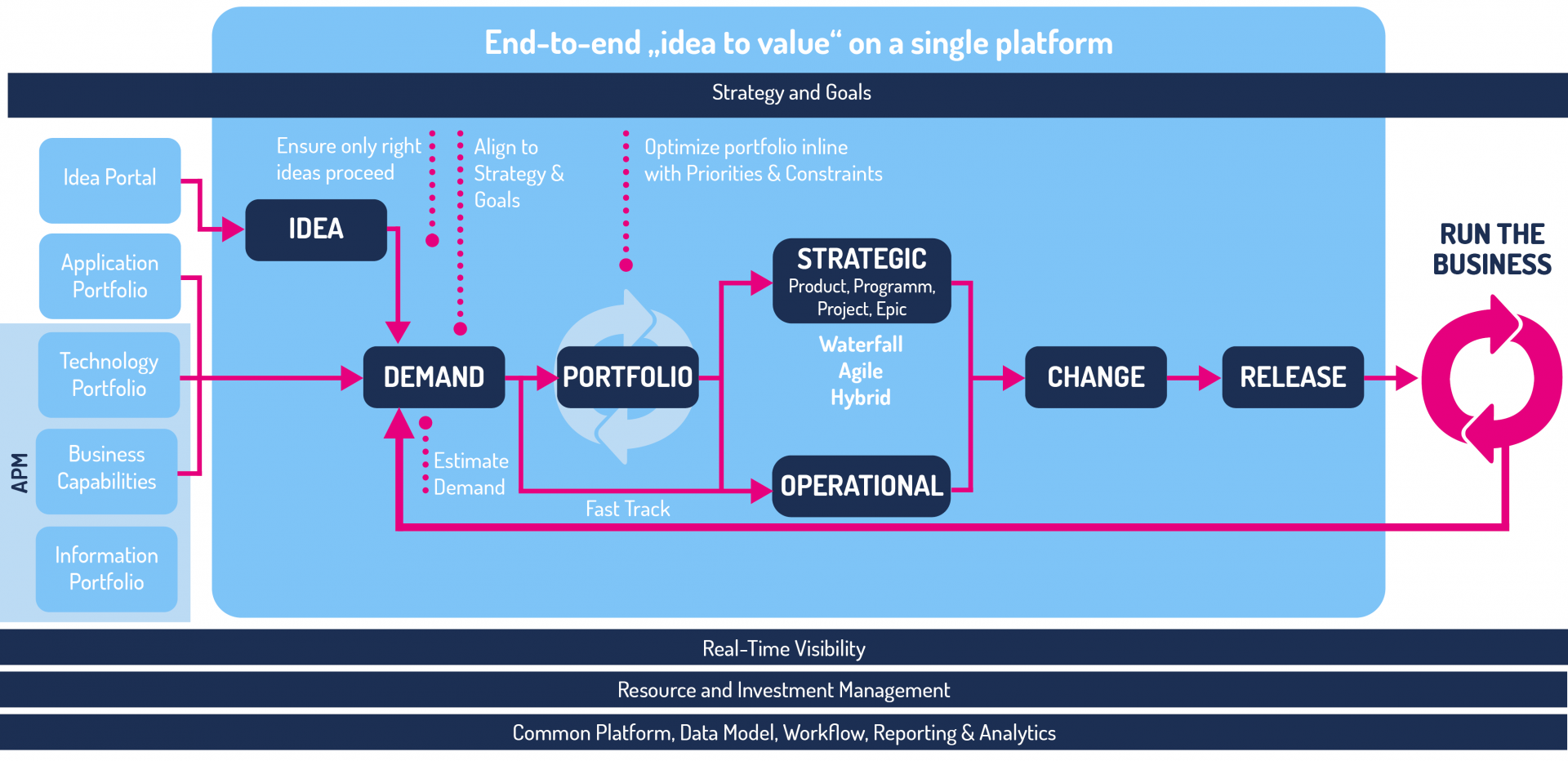The increasing level of digitalization in the manufacturing industry and in mechanical engineering requires a radical realignment of business processes and models. Agile product development is therefore becoming a central method for industrial companies to actively shape new markets and remain competitive.
Learn more in the latest Capture Blog post:
- Which trends and developments need to be taken into account in an Industry 4.0 strategy
- Why the use of PPM software for agile product development is more effective than, for example, product lifecycle management
- How to put product and project portfolio management into practice
- When to transition product and service ideas into a structured project management process
Paradigm shift in the industry: Smart products and solutions
For decades, project methods such as Six Sigma and CIP (= Continuous Improvement Process) dominated the constant cost and process optimization of industrial companies. With the digital transformation, the use of methods has been significantly expanded. This is because the introduction of new technologies does not follow linear processes and pure efficiency efforts, but requires entrepreneurial courage to experiment, which must be managed differently than usual.
In the age of Industry 4.0, companies, therefore, face the following challenges and opportunities:
- They need to adopt a range of disruptive technologies (mobile, cloud, advanced analytics, M2M, advanced robotics) to meet future Industrial Internet of Things standards.
- They need to digitize their product offering and thus also become service providers, which requires holistic new approaches to solutions
- The enormous possibilities of data generation can lead to a better understanding of the customer and new forms of business alliances.
- To keep up with the fast pace of innovation in the industry, a strategic mindset and operational framework around agile product development needs to be established
Agile product development with strategic vision
This market dynamic has shifted the focus from pure cost and process optimization to a design activity with a high investment volume. A study by the MPIU Group from 2020 shows that 40% of product sales are already generated by cyber-physical systems. The profit margin of these innovative market offerings exceeds that of established products by 34%.
The entrepreneurial direction of travel is therefore clear: it is important to identify the most attractive market opportunities and to develop the appropriate products and services for them. An agile approach is not a methodical fashion phenomenon, but an urgent necessity. Because it is not only the market conditions that change enormously quickly. The degree of maturity and the possibilities of using technology must also be constantly re-evaluated.
Product and project portfolio management instead of prototyping
While the last few years were characterized by isolated prototype developments or strategically ambitious, but operationally difficult to implement lighthouse projects, depending on the company, it is now important to consolidate the learning experiences in order to reach the next evolutionary stage of the digital transformation.
Today, it is increasingly true that implemented innovation projects should be further developed to market maturity. The decision-making process as to which product or service is actually designed and ultimately launched is thus the first significant milestone along the rest of the product lifecycle.
Product lifecycle management software with its feature spectrum usually starts after the decision-making process. Agile product development is not only an operational implementation task but also a strategic process - which must be supported with digital management tools.
The use of PPM software in industrial companies is booming

According to the management consultancy PwC, the use of product and project portfolio management solutions is therefore becoming increasingly popular in the industry. This is because the software offers fully comprehensive tools from idea generation to project implementation, including professional cost controlling, and thus meets the demands of agile product development:
- Product and project portfolio management clearly differentiates between idea generation, idea evaluation (= demand management), as well as strategic and operational implementation and, if required, brings the information from the different areas together again in an application-specific manner
- PPM software is not limited to the evaluation and implementation of projects, products or programs, but can also be used to analyze technologies, business processes, and information.
- By linking the different modules, important findings from preliminary projects as well as ongoing product developments, among other things, can be used for the assessment and comparison of several product ideas
- The structured, multidimensional consideration of product ideas increases the success rate of product and project portfolio management
- PPM software enables stringent product management in a highly volatile environment: agile project methods can certainly be combined with classic waterfall principles and hybrid approaches
- Industrial companies can also flexibly use individual PPM modules for their product management, integrate them with already established systems and expand the use of PPM accordingly as needed
The Capture Industry and Partner Agile Product Management Webinar Series
Sie möchten agiles Produktmanagement mit einer Produkt- und Projektportfoliomanagementlösung in Aktion erleben? Gemeinsam mit unserem Partner und Software-Anbieter ServiceNow haben wir speziell für Industrieunternehmen eine Webinarreihe aufgezeichnet, wo wir den PPM-Einsatz anhand branchenspezifischer Use Cases demonstrieren.
Would you like to experience agile product management in action with a product and project portfolio management solution? Together with our partner and software provider ServiceNow, we have recorded a webinar series especially for industrial companies, where we demonstrate PPM deployment using industry-specific use cases.